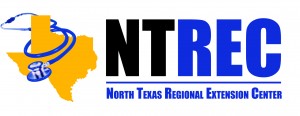Physician Data Analytics – Improving Your EHR for Patient Care and Population Health (Part 1)
Blog by Richard Howe, PhD
Last month, I discussed the return on investment (ROI) of using physician data analytics for population health. This month I want to cover some of the basic things you can do to enhance your electronic health record (EHR) for population health. The idea is to setup and use your EHR for improving patient care in a way that allows the system to collect the data for population health just as a by-product of the normal patient care process.
Basic Rules of the Road

A recent article in Healthcare IT News (01/15/15) discussed some ideas for better EHR usability. I call these “basic rules of the road.” By improving EHR usability, you will enhance the ability of your system to support population health analytics. Some basic rules of the road for improving your EHR include:
• Physician leaders in your practice should define the professional standards for clinical documentation. These “agreed to” standards must be established before installing an EHR and are basically independent of the EHR vendor system. These documentation standards will have an impact on how the EHR is setup, including screen workflows, required fields, order sets, documentation templates, presentation of summary and/or historical information, etc.
• Setup your clinical documentation process to support patient care and enhance communication. It is important for all staff in your practice to follow the same documentation process, so that a continuity of care can exist across your entire care team and communication is enhanced at the same time. A key success factor is to require a sufficient amount of recurring training to make sure all functions and features are being used correctly by your entire office staff.

• The clinical record should also include the “patient’s story.” This may be a short section of “free text” that comes directly from the patient. Even though structured text is preferred (to be discussed next month), this may be one place in the electronic record where free text adds value. This is especially true if your EHR allows the patient remote electronic access to their record so the patient can add their own “story.”
• Implement the use of “templates” to improve the efficiency of documentation for clinical procedures and results. This falls into what I call the “80-20 Rule,” where 80 percent of the time the standard templates work just fine. In general, templates greatly speed up the documentation process and improve accuracy of the data.
• EHR should present past patient history in a quick and easy way. Past history should show only the most relevant information and not be overloaded with so much detail the process is slowed and/or key relevant information may be overlooked. Even though you may have a large amount of data on a patient, make sure the first historical view is straight forward, simplified and relevant.
Next month I will present some additional ideas (Part 2) on how to improve your EHR for both patient care and population health.

